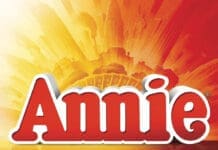By Janet Hardy, LMT

80% of Americans suffer back pain at some point in their lives. Perhaps you may feel stiff when getting up in the morning or know someone who’s tried different treatments for back pain but it’s still an issue for them. Often tests are run, showing no fractures, tumors or obvious reasons to explain the pain. Diagnostics are important but when tests come back negative, there is a good chance fascial restrictions could be the source. Currently fascia (connective tissue) is in the limelight of health research and myofascial release is slowly becoming a buzzword in the field of pain relief therapy. Fascia is the three dimensional web of tissue contiguous with every part of our bodies and has everything to do with the state of our health. Wrapping and infusing cells, muscles, organs, blood vessels and lymphatic vessels, it influences all functions and even operates as a communication system in addition to the nervous system. There is nowhere in the body that fascia does not affect. Restrictions in the fascia are areas where it becomes shortened, dehydrated, hardened and/or inflamed. We don’t want restrictions. Pliable and elastic tissue stimulates an optimally performing system and wards off stiffness and back pain. Ideally the fascia should be as fluid as possible. How can this be achieved? Stretching!
Not just for 10 or 30 seconds but for five minutes per stretch. It’s crucial to ease into a stretch with awareness while patiently waiting at a place of resistance for the essential time. This allows moving deeper into the stretch without strain while the fascia’s ground substance changes to a more fluid state. Since five minutes is a considerable time for this ‘transition phase’ to occur, position yourself comfortably. In addition to stretches, tools such as 4” inflatable therapy balls can be used to lean on against a wall or chair to relieve a tight or tender part of the back. Myofascial stretching does not involve using force or feeling pain. This does not produce lasting results whereas tissue transformation
will. For example, rolling on a foam roller is not myofascial release. Freeing restrictions in the fascia through myofascial stretching or myofascial release therapy can do wonders for relieving back pain by unleashing compression from muscles, tendons, nerves and other structures. Also subconscious beliefs contributing to restricted patterns in our movements are allowed to egress naturally, leading to more effortless movement and creating an opportunity for us to experience our bodies in a new way! Many conditions besides back pain can be addressed with myofascial stretching and it’s a powerful way to stay well.Check my facebook page listed under ‘Caring Touch’ to view a recent video on fascia research. To learn more about John F. Barnes’ Myofascial Release go to caringtouchtherapy.net.
Janet Hardy is a FL Licensed, Nationally Board Certified massage therapist and John F. Barnes’ Expert Level Myofascial Release therapist in Santa Rosa Beach, FL.

























































